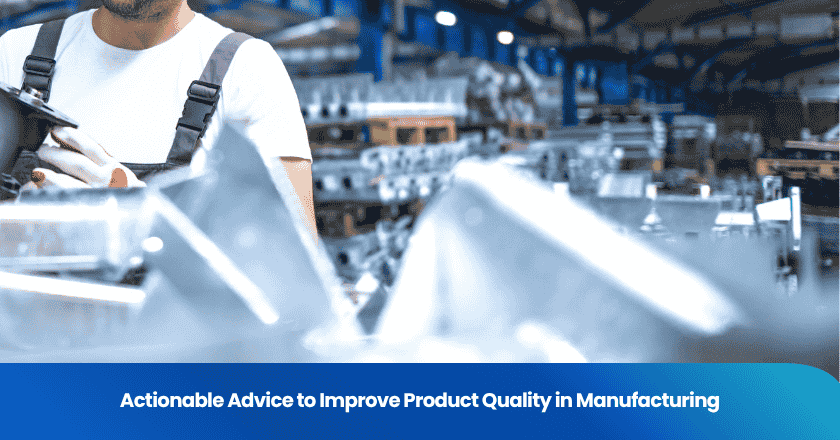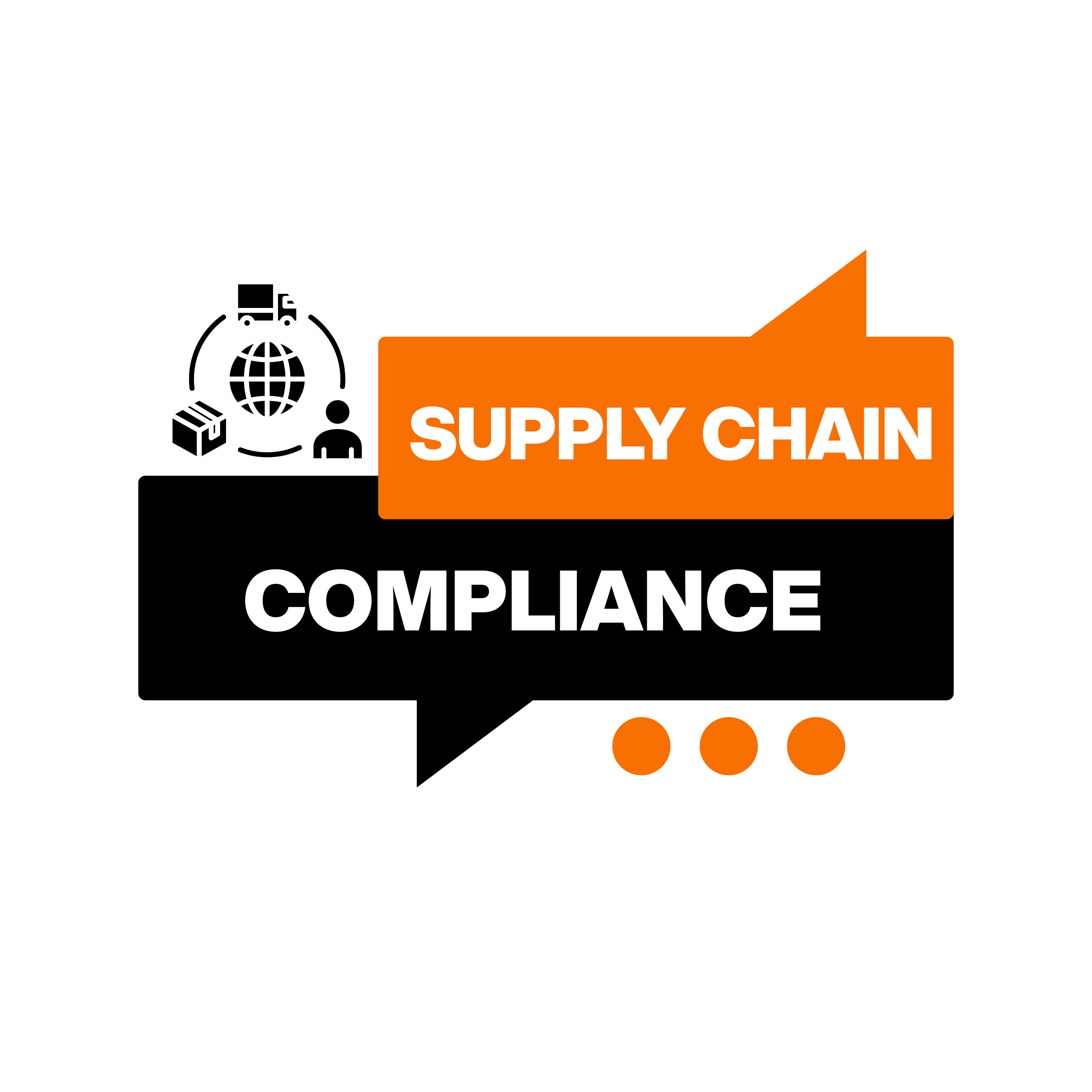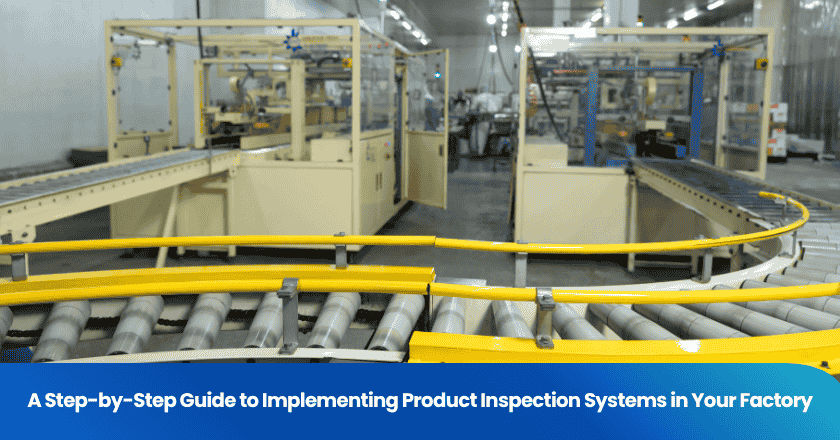
You can learn how to improve product quality in manufacturing by taking immediate, practical steps that focus on consistency and reliability. Quality drives business growth and customer satisfaction. High-quality products lead to repeat business and build trust. Customers stay loyal when you deliver reliable results. Quality assurance systems reduce churn and foster long-term relationships. Customer feedback helps you refine your processes and maintain high standards. Start implementing proven strategies to see measurable improvements.
Key Takeaways
- Focus on process standardization to ensure every team member follows the same steps, reducing product variation and defects.
- Implement automation to enhance consistency and precision, minimizing human error and allowing your team to tackle more complex tasks.
- Optimize workflows by eliminating unnecessary steps, which can lead to a significant reduction in errors and improved customer satisfaction.
- Invest in preventive maintenance to keep equipment running smoothly, preventing unexpected breakdowns and ensuring consistent product quality.
- Encourage employee involvement in quality assurance efforts to build a strong quality culture, leading to better results and higher morale.
Why Quality Matters
Customer Satisfaction
You build customer satisfaction by delivering consistent quality in every product. Customers expect products to work as promised. When you meet these expectations, you earn their trust and loyalty.
- Nearly 8 in 10 manufacturers agree that quality is crucial for building trust.
- High-quality products encourage positive reviews and word-of-mouth recommendations.
- Fewer complaints and returns result from strong quality control.
You boost customer confidence when you resolve problems quickly and maintain high standards. Consistency in quality leads to better user experiences and repeat business.
Cost and Efficiency
Quality impacts your bottom line.
Producing goods that fail to meet quality standards on the first try is a major drain on resources, leading to wasted materials and labor.
| Aspect | Impact on Costs and Efficiency |
|---|---|
| Increased Production Costs | Fixing defects requires extra labor, materials, and time, leading to higher production costs. |
| Inefficiency in Production | Defects waste time that could be spent on productive activities, slowing down overall production. |
| Material Waste | Defective products that cannot be repaired must be discarded, wasting raw materials and increasing costs. |
Quality issues extend production cycles and delay delivery schedules. Research shows that quality-related delays can reduce production efficiency by 25%. You save money by reducing scrap, rework, and warranty claims. Automated inspection systems and early detection of defects help you minimize waste and improve sustainability.
Reputation
Your reputation depends on the quality you deliver.
- Cultural norms shape how consumers perceive quality in different regions.
- Durability matters in Germany, design is valued in Italy, and practicality is key in Southeast Asia.
- A strong customer focus ensures products are designed with quality in mind.
- Enhanced quality increases consumer appeal and strengthens your brand reputation.
You attract new customers and retain existing ones by maintaining high quality standards. Quality sets you apart in global markets and drives long-term success.
How to Improve Product Quality in Manufacturing
You can take several effective steps if you want to know how to improve product quality in manufacturing. Industry experts recommend a combination of strategies that address every stage of the process.
The following table highlights some of the most impactful approaches:
| Strategy | Description |
|---|---|
| Auditing Processes | Routine audits identify weak points and ensure compliance with quality control techniques. |
| Collecting Data | Data collection systems track product testing, providing insights for better decision-making. |
| Automation | Automated solutions reduce manual errors and improve precision in inspections. |
| Statistical Process Control | SPC helps identify and address issues during production. |
| Employee Involvement | Encouraging problem reporting and rewarding quality goals fosters a culture of quality. |
| Six Sigma and TQM | Implementing these methodologies can drive long-term success in quality management. |
You can also implement just-in-time production to minimize inventory costs and use continuous improvement methods like Kaizen to encourage everyone to contribute ideas for process optimization.
Process Standardization
Standardizing your process is one of the most reliable ways to improve quality. When you create clear procedures and work instructions, you ensure that every team member follows the same steps. This consistency reduces product variation and makes it easier to identify and correct mistakes. Standardized processes lead to predictable results, which means fewer defects and less need for rework. You also save time on training new employees because they can follow established guidelines. By focusing on process standardization, you set a strong foundation for quality improvement in every area of manufacturing.
Automation
Automation plays a critical role in how to improve product quality in manufacturing. Automated systems perform tasks with unmatched consistency, which is essential for meeting strict quality standards. You reduce human error and minimize product variability by using automation. This ensures that every product meets the same high standards, even in industries with tight regulations. Automation also enhances precision and accuracy, allowing you to maintain quality while increasing production speed. When you automate inspections and repetitive tasks, you free up your team to focus on more complex quality challenges.
Tip: Start with automating the most repetitive or error-prone steps in your process. You will see immediate gains in both efficiency and quality.
Workflow Optimization
Optimizing your workflow is another powerful way to improve quality in manufacturing. Streamlined workflows eliminate unnecessary steps and reduce bottlenecks. When you optimize your process, you achieve more consistent results and minimize errors. Organizations that focus on workflow optimization often report a 50% reduction in errors and defects. Customer satisfaction scores can rise by 30%, and complaints may drop by up to 45%. Fewer defects mean lower return rates and stronger customer relationships. You also reduce the need for inspection or rework, saving both time and resources.
- Standardized processes lead to consistent results.
- Errors and defects are minimized.
- Customer satisfaction increases as product quality improves.
Preventive Maintenance
Preventive maintenance is essential if you want to improve quality and avoid unexpected breakdowns. Regular inspections and servicing of equipment help you identify and resolve potential issues before they escalate. This proactive approach keeps your machines running at peak performance, which ensures consistent production quality. For example, routine checks can detect worn belts or low fluid levels, preventing system failures that disrupt your process. Scheduling maintenance during off-peak hours allows you to plan repairs without affecting productivity. Well-maintained equipment eliminates inefficiencies caused by wear and tear, leading to smoother operations and higher quality output.
Note: Preventive maintenance not only reduces downtime but also supports your overall quality improvement goals by keeping your process stable and reliable.
By focusing on these strategies—process standardization, automation, workflow optimization, and preventive maintenance—you can make significant progress in how to improve product quality in manufacturing. Each step strengthens your process and brings you closer to consistent, high-quality results.
Quality Control Methods
Effective quality control methods help you maintain high standards in manufacturing. You can choose from several proven quality control techniques to ensure every product meets your expectations. The table below summarizes some of the most widely used methods:
| Quality Control Method | Description |
|---|---|
| Root Cause Analysis (RCA) | Identifies primary causes of issues to prevent long-term damage from quality failures. |
| Statistical Process Control (SPC) | Uses statistical methods to monitor processes, identifying trends and potential issues before defects occur. |
| Lean Manufacturing | Focuses on minimizing waste and maximizing value by continuously improving processes and eliminating defects. |
| Total Quality Management (TQM) | A holistic approach that reduces defects, lowers costs, and improves customer satisfaction through employee involvement. |
| Quality Inspections | Involves inspection and assessment of products at any production stage, using various methods for consistency. |
| Failure Testing | Evaluates product durability under extreme conditions to expose flaws and improve quality. |
| Six Sigma | A structured method involving five steps to define and control processes to achieve high-quality standards. |
100% Inspection
You can use 100% inspection to examine every product before it leaves your facility. This quality control technique gives you assurance at a granular level, reducing the risk of defects and boosting customer satisfaction. You gain a valuable feedback loop by identifying defect patterns, which supports continuous improvement. Early detection of issues helps you cut costs related to rework and scrap. However, you must consider the resource investment and the risk of human error.
Statistical Process Control
Statistical process control (SPC) stands out as one of the most effective quality control techniques. You use statistical tools to monitor your processes and spot trends before defects occur. This approach reduces process variability, which is crucial for early defect detection. You collect data from key production points and track performance metrics. Control charts help you identify abnormal variations and take proactive corrective actions. By moving from reactive to proactive quality control, you improve your manufacturing process and prevent defects before they happen.
- SPC reduces process variability and supports early defect detection.
- Continuous monitoring with control charts highlights trends and abnormal variations.
- Data-driven decisions help you maintain tight control over product quality.
Six Sigma
Six Sigma provides a structured approach to quality control. You follow five steps—define, measure, analyze, improve, and control—to achieve high-quality standards. This method aims for a theoretical failure rate of only 3.4 defects per million opportunities. When you implement Six Sigma, you see significant improvements in operational efficiency, a reduction in waste, and enhanced customer satisfaction. You should track defect rates before and after Six Sigma projects to measure success. Tools like Pareto charts and control charts help you visualize improvements over time. Six Sigma projects often lead to increased profitability and a stronger reputation for quality.
Improve Quality by Design
Quality by Design Principles
You drive quality improvement when you integrate quality into the earliest stages of product development. Quality by Design (QbD) encourages you to identify risks before production begins. This proactive approach reduces defects and enhances the consistency of high-quality products. You avoid waste and inefficiency by implementing controls that address potential issues from the start. Manufacturers who prioritize QbD see fewer defective products and smoother production processes.
The core principles of QbD guide you in building quality into every step:
| Core Principle | Description |
|---|---|
| Define Quality Objectives Early | Establishing clear quality goals at the start of the development process. |
| Identify Critical Quality Attributes | Recognizing key attributes that affect product quality and performance. |
You set clear objectives and recognize critical attributes that influence product quality. These steps help you deliver high-quality products that meet customer expectations and regulatory standards. You create a foundation for continuous improvement and long-term success.
Tip: Review your design process regularly to ensure quality objectives remain aligned with production goals.
Ergonomics and Production Flow
You improve quality and efficiency by focusing on ergonomics in your manufacturing environment. Ergonomic design reduces workplace injuries and supports consistent production flow. When you optimize workstation layouts to waist level, you decrease back strains by 20%. Implementing ergonomic solutions can lead to a 30% reduction in lifting injuries. Material handling equipment achieves a 50% decrease in injuries, while ergonomic tools cut workplace injuries by 40%. These interventions result in less discomfort and a 30% reduction in overall injuries.
- You minimize errors caused by fatigue and discomfort.
- Production teams maintain focus and deliver high-quality products.
- Fewer injuries mean less downtime and lower compensation costs.
You create a safer, more productive workspace that supports quality improvement. Ergonomic design ensures that your team works efficiently and consistently, driving better outcomes for every product.
Employee Involvement in Quality
Training
You drive quality improvement when you invest in employee training. Well-trained employees understand your processes and follow quality assurance protocols with precision. Training programs help your team master new equipment and techniques, which leads to fewer mistakes and higher product standards. You see measurable results when you focus on skill development.
The following table shows how training impacts error rates and quality assurance in manufacturing:
| Metric | Impact on Error Rates |
|---|---|
| Operational Efficiency | Improved post-training |
| Quality Control | Enhanced compliance and fewer defects |
| Workplace Safety Compliance | Reduced incidents and errors |
| Defect Rates | Up to 20% fewer defects reported |
| Learning Retention | Improved by up to 400% with visuals |
| Human Error Contribution | 23% of unplanned downtime attributed |
You notice that quality assurance improves as employees gain confidence and competence. Training also reduces human error, which accounts for nearly a quarter of unplanned downtime. When you use visual aids, learning retention increases, and your team remembers quality procedures more effectively. You create a culture where everyone values quality and strives for continuous improvement.
Building a Quality Culture
You build a strong quality culture by involving every employee in quality assurance efforts. When you communicate your vision clearly, employees feel engaged and motivated to achieve high standards. Supportive leadership amplifies the benefits of employee involvement, creating an environment where quality thrives.
Key elements for building a quality-focused culture include:
- Leadership involvement shapes and nurtures a commitment to quality.
- Clear communication of values aligns everyone with quality objectives.
- Accountability and recognition reinforce positive behaviors.
- Understanding organizational culture helps leaders create a strategic environment for quality assurance.
- Focusing on these elements attracts top talent and drives long-term success.
You empower your team to take ownership of quality. When employees participate in quality assurance activities, you see better results and higher morale. A strong quality culture ensures that quality improvement becomes a shared goal, not just a management directive. You set the stage for sustained excellence in every aspect of your manufacturing process.
Continuous Improvement
Regular assessment and ongoing improvement of your quality control processes drive sustained success in manufacturing. You need to adopt a mindset of continuous improvement to deliver high-quality products and services. Incremental changes and frequent performance checks help you identify areas for enhancement. Studies show that about 36% of improvements directly impact quality, while 31% boost both staff and customer satisfaction. This approach ensures your manufacturing operations remain competitive and responsive to market demands.
Feedback Loops
Feedback loops play a vital role in refining your manufacturing process. You should treat feedback mechanisms as dynamic processes that evolve with your organization’s goals. Regular reviews of these systems help you align feedback with your objectives. Customer reviews and employee insights transform into actionable decisions that enhance product quality. By continuously refining your feedback loops, you create a culture of improvement and ensure that valuable information leads to meaningful changes.
- Feedback loops should remain flexible and adapt to organizational needs.
- Frequent evaluation of feedback mechanisms supports ongoing quality improvement.
- Alignment with company goals ensures feedback drives effective process enhancements.
Monitoring Progress
You must monitor progress to measure the effectiveness of your quality initiatives. Manufacturers track process improvements using key performance indicators (KPIs) such as productivity, product quality, lead times, and costs. Real-time dashboards visualize performance against these metrics, making it easier to spot trends and address issues quickly. Continuous improvement software centralizes data, providing instant access to cycle times and defect rates. Automating data collection guarantees accurate and timely information, helping you identify problems early. Real-time reports support better decision-making and allow you to adjust your process for optimal results.
- Use Overall Equipment Effectiveness (OEE) to measure equipment performance, availability, and quality.
- Centralized dashboards eliminate guesswork and offer clear insights into process performance.
- Real-time monitoring helps you identify bottlenecks and track the impact of improvement efforts.
By focusing on feedback loops and monitoring progress, you create a robust framework for continuous improvement. This commitment to regular assessment ensures your manufacturing process consistently delivers high-quality products.
You can boost product quality in manufacturing by standardizing processes, automating tasks, optimizing workflows, and maintaining equipment. Immediate action delivers measurable results. The table below highlights reported benefits within the first year:
| Benefit | Description |
|---|---|
| Lower operating cost | Value-stream mapping uncovered $1.2 million in savings and reduced raw-stock days by 40%. |
| Stronger quality | Error-proofing cut defects from 18,000 to 2,800 parts per million and reduced warranty claims. |
| Faster delivery | Lead times dropped from six weeks to fifteen days with balanced work cells and heijunka scheduling. |
| Higher engagement | Weekly kaizen huddles encouraged operator-driven improvements. |
Manufacturers measure ROI by tracking costs, productivity gains, and customer satisfaction. Start your journey by assessing current operations, creating baseline metrics, and prioritizing improvements. Choose one strategy today and commit to ongoing progress for lasting success.
FAQ
What is the first step to improve product quality in manufacturing?
You should start by assessing your current processes. Identify areas with frequent defects or inefficiencies. Set clear quality goals and involve your team in finding solutions. This approach helps you build a strong foundation for improvement.
How does automation impact product quality?
Automation increases consistency and reduces human error. You achieve higher precision and faster production rates. Automated systems help you maintain strict quality standards and free your team to focus on complex tasks.
Why is preventive maintenance important for quality?
Preventive maintenance keeps your equipment in top condition. You avoid unexpected breakdowns and maintain steady production. Regular checks help you catch issues early, which leads to fewer defects and better product quality.
What role does total quality management play in manufacturing?
Total quality management involves everyone in your organization. You focus on continuous improvement and customer satisfaction. This method uses data-driven decisions and teamwork to reduce defects and boost overall quality.
How can employee training improve manufacturing quality?
Employee training ensures your team understands procedures and quality standards. Well-trained staff make fewer mistakes and handle equipment safely. Ongoing training keeps skills sharp and supports a culture of quality.
Grow your business with TradeAider Service
Click the button below to directly enter the TradeAider Service System. The simple steps from booking and payment to receiving reports are easy to operate.




